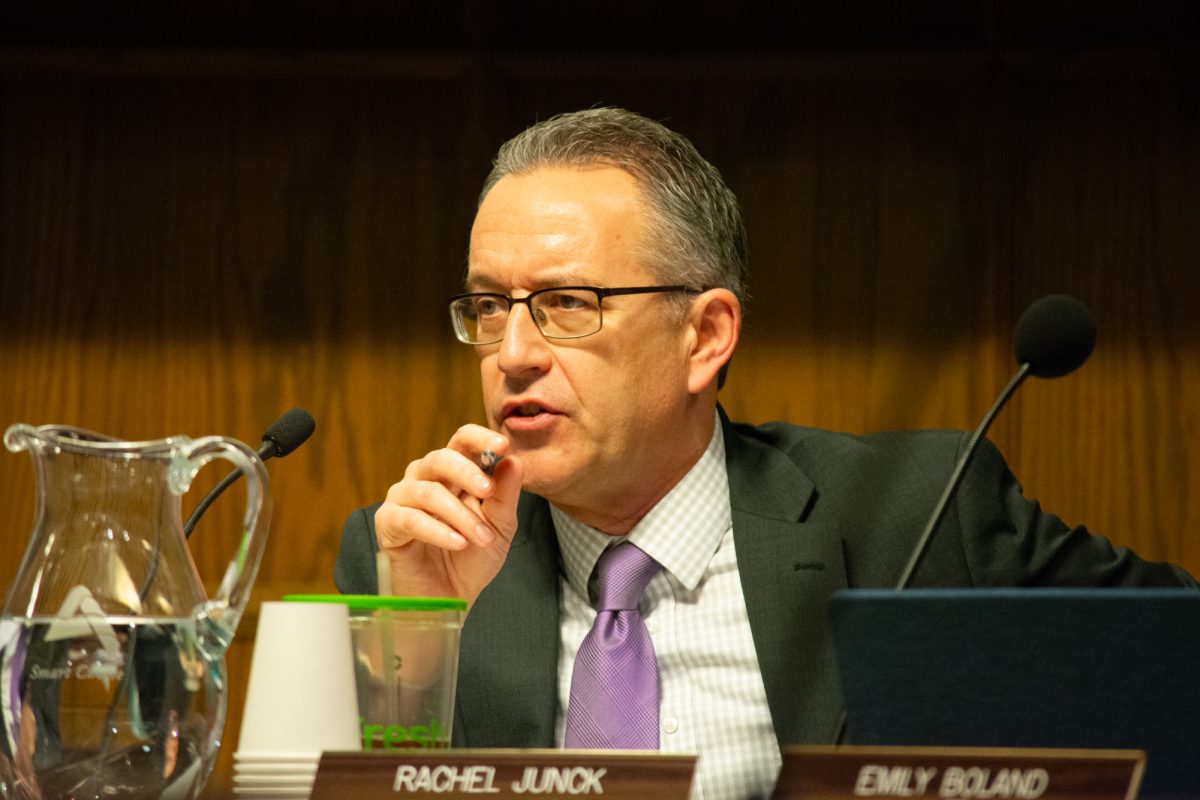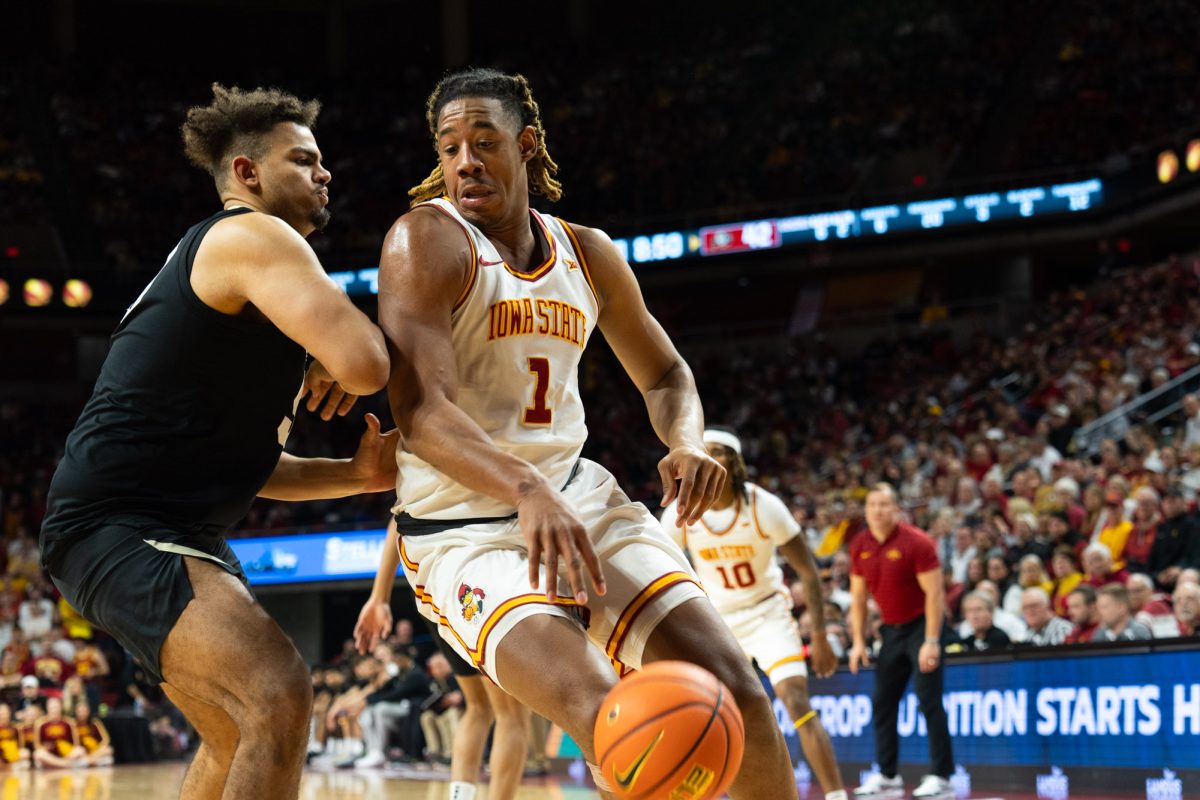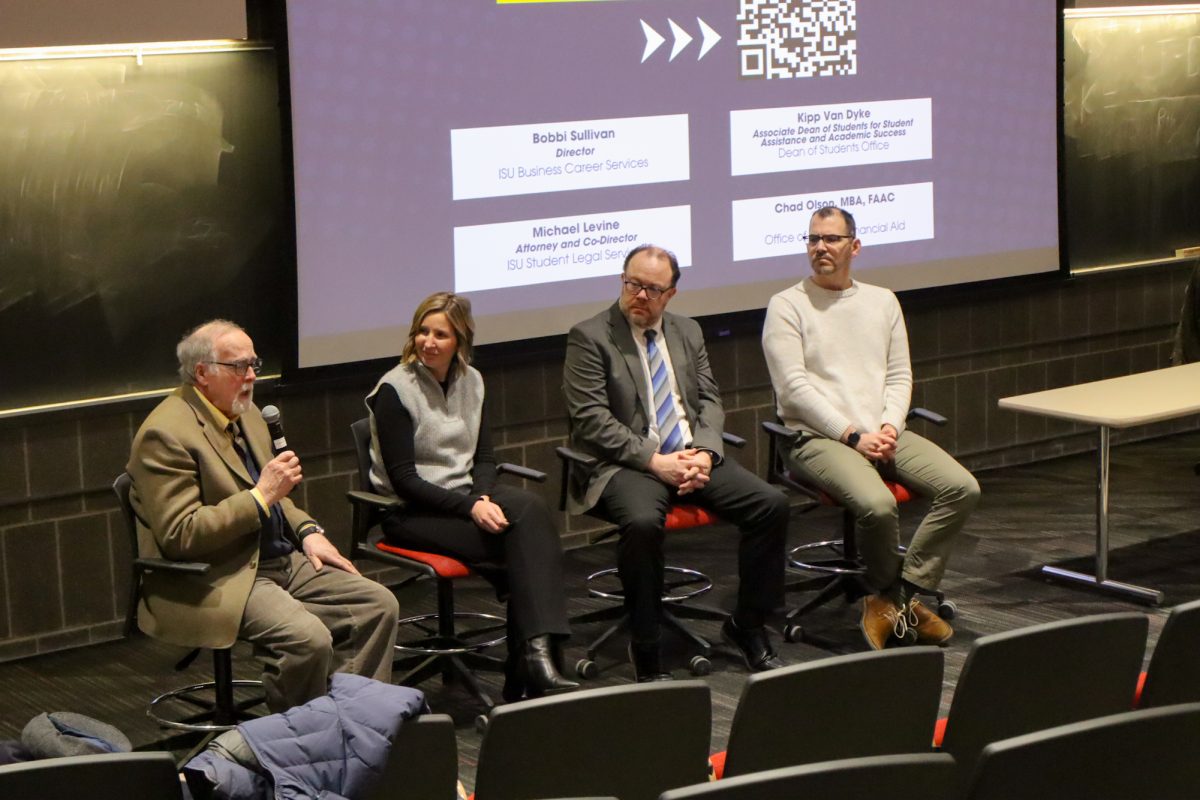Layers of life…and death
October 8, 2000
Depictions of war coexist with a deceased mother’s possessions in April Katz’s dual-themed exhibit.
The ISU printmaking instructor’s multicolored and multilayered work is on display in the Gallery in the Round at the Unitarian Fellowship Church, 1015 Hyland Ave.
The exhibit is divided into two sections, “Making Time” and “Just War,” with each focusing on Katz’s mother and the Persian Gulf War, respectively.
Katz displays personal emotion in both groups of work.
In “Making Time,” Katz deals with the loss of her mother.
Many of the prints contain manipulated pieces of her mother’s date book, which she found while going through her mother’s belongings.
“She kept these planners for 10 to 15 years back,” Katz said. “I went to throw them away, but they were her life.”
Handwritten messages that say things like “April calls” and “Dentist” are easily visible in the artwork containing the date- book excerpts.
Some of the work contains alchemic symbols which Katz said represent a need for spiritual belief.
“I wanted the feeling to still continue,” Katz said.
Katz said she was looking for a feeling of metamorphosis regarding her mother.
In addition to the planner pages, Katz incorporates images of a lamp that belonged to her mother, the rabbit from Alice in Wonderland and candles into the prints.
The work titled “Too Late” is part of the “Making Time” series. The print is dark in value, but light seems to emit from the image of the lamp on the lower right side. The light casts shadows between the layers of prints and shapes causing them to jump out in three dimensions.
Two phrases printed in old-style typeface, “if the music be the food, play on” and “we are all frail,” relate to Katz’s search for spirituality and desire to keep the memory of her mother.
The artist employs a variety of printmaking techniques. She incorporates monoprints, woodcut, lithographs, etchings and other techniques to create a deeply layered and textured effect.
Many of these one-of-a-kind prints were made while she was producing editions of prints. An edition is a numbered group of prints that are exactly the same.
“I acquire a lot of different plates when I make my editions, and I try them in different orders and colors,” Katz said. This allows her to mix and match the prints and even collage some of them together to come up with unique, one-of-a-kind prints.
Katz said many of the collages began when she was on sabbatical touring in Europe. She would combine postcards, napkins, and anything with different designs while riding the trains in Europe.
The artist was highly interested in the European imagery that was very different from what she had seen in the United States.
The “Just War” group of artwork relates to Katz’s feelings toward the Persian Gulf War.
The prints show an ancient Mesopotamian figure with big eyes and a long beard juxtaposed alongside images of men in gas masks. The backgrounds are filled with planes dropping shrapnel onto the ground as well as silhouettes of soldiers in battle.
Katz was teaching Mesopotamian Art History in 1991 when she made the prints. She felt the art was similar to the Gulf War images on television in regard to the large eyes and the extensions from the figures’ chins.
“Mesopotamia’s art was about war,” Katz said.
The largest work is an altar-like piece that contains the figures of Mesopotamia and the gas mask figures along both sides. White stars form a border for the piece.
At the top in deep black charcoal are subtle hands. Silhouettes of soldiers fill the lower portion of the large drawing. At the foot of the piece rests a kneeler for people to kneel and get a closer look at the work’s details.
And Katz feels these details and layers are important.
“I don’t want people to just walk past,” Katz said. “I want people to look deep into the work.”
The exhibit will be on display through October. Viewers can arrange to see the work by calling the Unitarian Universalist Fellowship of Ames at 292-5960.






